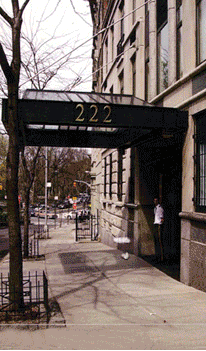
Sound Bite
American culture is a rich and complex tapestry of colorful threads from at least five continents, and in recent decades increased immigration has meant that the pace of change is accelerating. It's time for us to get to know ourselves and really appreciate this rich, vast, and rapidly expanding culture.
This book explores the contributions of Hispanic, Black, Native American, Oriental, Jewish and other cultures to a nation where many people still focus on the influences of Christian, capitalist, and ethnically European (particularly British) heritage.
About the Author
Jerry Carrier is a nationally-recognized educator in class, poverty, affordable housing and economic development. He has taught and developed curriculum for universities, state and local governments, schools, and non profits.
Carrier grew up in poverty and as a child lived in a public housing project, an abandoned Navy hospital, ‘en el barrio,’ a rented farmhouse, and a rural wood-heated cabin. In twelve years he attended six elementary schools, a middle school, and two high schools before graduating. He went to work at the age of twelve as a busboy and dishwasher in a railroad depot. He worked various full time jobs through junior high, high school and college supporting his family. He is the first in his family to graduate from high school and college.
Mr. Carrier is a faculty member at the National Graduate School for Community Economic Development at Southern New Hampshire University and for the National Neighborworks Training Institutes. He has worked for over thirty years in community economic development and public administration as an executive director of several nonprofits, a community action agency, a housing authority, and in local governments as an economic development director and planner, and has also been a city manager of several cities. He has also been on the Boards of Director of five nonprofits and a school.
Mr. Carrier’s columns on class, economics, poverty, and politics have been published in over a dozen newspapers and he has been a contributing writer to many nonprofit and government texts on these subjects. He and his family live in Lakeville, Minnesota.
|
|
About the Book
Written for a general audience, 'Tapestry' explores the myths of American culture and reveals surprising cultural roots including the fact that American democracy and representative government were inspired more by Native American ways than by the...
Written for a general audience, 'Tapestry' explores the myths of American culture and reveals surprising cultural roots including the fact that American democracy and representative government were inspired more by Native American ways than by the ancient Greeks and Romans.
Capitalism has become an unchallenged idea, a cultural universal, and so dogmatic that coupled with Christianity it has become America's dominant religion. However, capitalism is a 19th-century concept created for the bygone industrial era. Now the system is showing decay. Unfortunately, America is an ethnocentric country whose jingoistic belief in its own exceptionalism may prevent needed change. American culture has been both inclusive and intolerant. Today it stands at a crossroad and must decide what road to take. Are we to enter a renaissance or a dark age?
|
Table of Contents
Introduction to American Culture
Chapter 1. American Ethnocentrism & the Myth of American Exceptionalism
Chapter 2. Native Roots
Chapter 3. Latinos, Hispanics, Chicanos, Tejanos, and
Table of Contents
Introduction to American Culture
Chapter 1. American Ethnocentrism & the Myth of American Exceptionalism
Chapter 2. Native Roots
Chapter 3. Latinos, Hispanics, Chicanos, Tejanos, and Nuyoricans
Chapter 4. African-American Culture
Chapter 5. Asian-Americans
Chapter 6. The European-Americans
Chapter 7. Canadian-Americans, Jewish-Americans, Polynesians and Mixed Races
Chapter 8. The American Language
Chapter 9. American Religion and Belief Systems
Chapter 10. Regional Cultures
Chapter 11. The 1950s
Chapter 12. Bohemians, Beatniks, Hippies, and the 1960s CounterÃ?ÃÂCulture
Chapter 13. Radio & Television
Chapter 14. The Theatre & Movies
Chapter 15. Literacy, Education and Literature
Chapter 16. Blues and Jazz
Chapter 17. American Gun Culture
Chapter 18. American Military Culture
Chapter 19. American Oil Culture
Chapter 20. Class & Culture
Chapter 21. Immigration, Migration and Mobility
Chapter 22. American Cyber Culture
Chapter 23. The American Cult of Personality
Chapter 24. American Economics and the Religion of Capitalism
Chapter 25. Anti-Communism'The Ultimate In American Xenophobia
Chapter 26. Conclusions From American Culture
Bibliography
Acknowledgements
Index
|
|
Pages 268
Year: 2014
BISAC: HIS054000HISTORY / Social History
BISAC: HIS036000HISTORY / United States / General
Soft Cover
ISBN: 978-1-62894-048-0
Price: USD 21.95
Hard Cover
ISBN: 978-1-62894-049-7
Price: USD 31.95
eBook
ISBN: 978-1-62894-050-3
Price: USD 21.95
|













